Governments in transition economies consider foreign direct investment (FDI) as an important factor, which can improve competitiveness of their eco-nomies and bridge the wide gap between developed countries and transition countries in the fields of technology, access to world markets etc. It is generally accepted that there is important positive long-term impact of FDI on the balance of payments. Foreign direct investment can also play an important role in lowe-ring the deficit and in keeping such capital, which could have otherwise been invested or trans-ferred abroad, at home. The positive role of FDI has been seen also in several other areas, e.g. technology and knowledge transfer, imposing necessary ecologi-cal and technical norms and standards. Having in mind the broadly conceived importance of FDI, this paper aims to provide an insight into the Slovak situation. Since purely theoretical Slovak papers on the specifics of this country’s FDI are missing, we omit in this study to develop any theoretical framework for its transi-tional period. Where necessary, we refer to several theoretical works written by foreign scholars. Despite our limited references to them we are well aware of substantial contribution of R. Vernon, J. H. Dunning, M. Casson, A. Rugman and others in the field of FDI research. ....
More...
Keywords: Modernism; liturgy; Communio; Roman School; reform movement; central; longitudinal
Hungarian church architecture of the 20th century accurately reflects the European historical and artistic development processes of the given period. Though this century was typified by its enriching of the region by presenting the values of individuality, at several points it is still possible to observe the continuity of forms, structures or the craft itself related to foreign connections can be observed at several points. The architectural consensus of buildings designed by architects working in parallel cannot always be derived from the activity of any architectural school. However, it can be noted in general that the spirit of the modern age demanded everywhere the overcoming of the ideals of historism bound by formalities with the help of the liberating facilities of technology, and by presenting their philosophical, aesthetical and economical values. Nevertheless, the intrinsic contradictions of the Modern Movement, which had defined itself only in an unsatisfactory way regarding the matter of tectonics, historic and space context and architectural immanence, were manifested in an apparent break in sacral architecture rooted in liturgical traditions. Though in the third quarter of the century we can find examples of even some industrial-constructivist interpretations of sacral buildings, from the point of view of new social demands and technology the Church’s changed role can be defined only temporarily or incompletely. We also have to take into consideration the iconological hiatus that arose from the modernist repudiation of the spatial and textual symbolic order that had previously existed in historism, in the church architecture of Art Nouveau or in the Hungarian national movement at the turn of the century. The iconological patterns were dissolved in the expressive form, in the avant-garde reduction of liturgical arts and in the space-topography; while the liturgical spaces cleansed of narratives and allegories emphasized the independence of holiness from space and time as well as its direct and universal aspect. Consequently, this purity of sacral spaces was attached to the development of a religious community into an intellectual centre, while the uniqueness of the liturgical word, which was just being born, was connected to the specialty and singleness of individual spaceformation. It may seem rather contradictory that in the decades when the experimental form of modernity spread through Europe, Hungarian church architecture of the period between the two world wars was much more connected to historical archetypes, to ‘common taste’ and to the emphasis on the community creating the role of the church than the Hungarian state architecture of the era after World War II, in which architecture professed social realism, the will of people and communism, but soon performed a complete turn to modernism. After the liquidation of the communist regime, the liturgical architecture of the era had the chance to take inspiration...
More...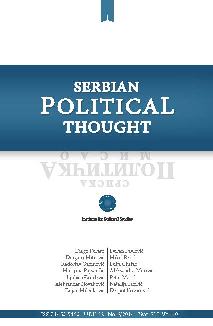
Keywords: China; Central and Eastern European countries; Serbia; “China plus Sixteen”; EU
World economic crisis has focused, intensified and notably eased realization of huge Chinese interests in Europe and European Union. On the other side, it has significantly influenced change of the EU’s attitude towards China, which suddenly for some has become appreciated big investor, and even saviour of the EMU through purchasing the EFSF bonds, as well as Union’s economy on the whole. For the others, she remained a threatening imposer. Important alarming point of such attitude change supporting the later position has been reviving of the economic cooperation between China and Central and Eastern European countries thru “China plus Sixteen” framework. For Chinese and crisis stricken countries in Central and Easter Europe it was more promising and matching interest cooperation between investments and technology hungry CEE countries and China in global dispersing asset-acquisition process. Long history and tradition in cooperation since the very birth of the People’s Republic and absence of political preconditioning only supported the issue.
More...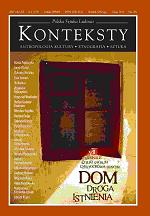
Keywords: anthropology; home
The thesis of this article focuses on the ritual function of the home. The point of departure are the findings made by researchers studying the functions of the ho me, primarily Danuta and Zbigniew Benedyktowicz, who indicate the overwhelming mythical role played by the home (the home-centre, the home-dream, the home-cosmos or even the home-chaos), its magical-ri- tual role (the zakladziny practices, the site of carrying out the rites of transition and fertility, the archetypical foundation of processes of individuation, the holy cor- ner conceived as aprolongation of liturgical rituals) or social role (the place of the formation of basic compe- tences for living in agroup, interaction with the outer world, the storehouse of clan tradition). The above-li- sted functions are confirmed by suitably formalised practice that, however, constitutes only asmall part of symbolic interactions, in which the residents remain with their homes. An interpretation category applied to indicate un-formalised interactions is the concept of rituality, derived from la vie sérieuse expounded by Durkheim and le mythique formulated by Barthes. Thus understood rituality is avariety of ritual behavio- ur – scattered, unconscious, stream-like – that acts as an intermediary between our relations with the outer world; at the same time, it serves the shaping of perso- nal and group identities. This is the case of communi- cation (self-communication – Lotman), whose part- ners (intermediaries) are also material objects, inclu- ding the home. Due to its indistinct nature one should speak about this instance of rituality/communication first and foremost in the categories of causality, the in- dividual emotional/cognitive act. The symbolic of the home and all sorts of artefacts that make it up obtains in this manner an intimate form, and the home itself assumes the form of an indexical cipher applied by the person (persons) living in it. This is ahome inscribed into individual (collective) personality. Areverse pro- cess also takes place: personalities are moulded by the symbolic baggage of the home. In this interpretation, we may ascribe to it the role of the generalised other (Mead).
More...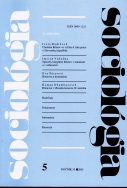
Keywords: housing districts in Bucharest; socio-psychological dimension;
The topic of this article was born of the many current discussions concerning Bucharest and its present condition, as opposed to that of the ‘marvel’ city that it once was.2 One of the most problematic issues currently under consideration is that of the housing districts built in the socialist era.3 These are large areas, mostly situated at the periphery of the city, but which over time have started to attack the city of Bucharest as a whole. This came about because the architecture of these districts is closely linked to the social dimension of the areas; a city is made of its people, and people move around, are influenced by and influence their environments. The actual aim of this paper is to identify ways in which to rehabilitate these condemned housing districts. I am not concerned here with a discussion of the buildings themselves. I am interested in the spaces between the blocks, the leisure areas – that are deserted, in the opinion of many, but in practice this is not altogether true – and all the possible spaces in the district where change could make a difference to the lives of the inhabitants. Thus, this paper will discuss the possibility of creating community centers, where people can engage in dialogue on various matters of interest.
More...Keywords: Globalization and hermeneutics; globalisation; Walter Benjamin on translation; Cultural imperialism revisited; Americanization as McDonaldization; Cultural hybridization; De-territorialization; global identities; The Impact Of Global Images Upon Local Id
Global programs: soap operas and telenovelas. The bricolage available to Romanian audiences. Identifications with images of ideal femininity. A defense against de-territorialization. An initiation in consumer culture. Romanian versus British Cosmopolitan – more texts and fewer images. The tension between images and texts. The spectacle of consumer culture. The aura of the West.
More...The City Of Today From A Theoretical Perspective. Sociologists, philosophers, analysts, anthropologists and their attitude towards space / urban space – once again from a theoretical perspective. Public Discourse Against The City. Urbanism In Today’s City – In Practice. Public art – or art in the city. The quest for individual comfort. Public, Society, Community And Their Spaces / Urban Territories. Romanian Cities And The Autochthonous Social "Reality". Fifty years of communism and their consequences for the cities.
More...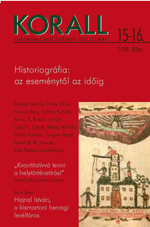
Keywords: Hungary; social history; historiography; testaments; research of testaments: international overview
In the past few decades the overwhelming majority of historical research studying testaments followed quantitative methods. The leading British, French, and American scholars of the field fashioned themselves in robust examinations and applied a systematic statistical approach to last wills. Among others, Wilbur Kitchner Jordan, Michel Vovelle, Pierre Chaunu, Jacques Chiffoleau, and Samuel K. Cohn categorized and counted charitable giving as found in the testaments in order to investigate pious practices. They argued that registering shifts in the patterns of pious activities indicated longue durée or sudden mental changes among the testators. They provided a powerful model, which exhibited that measuring religious attitudes was actually feasible and a fruitful scientific enterprise. Other historians pointed out the scantiness of serialized methods and drew attention to a number of problems a quantitative historian has to face with when translating the narrative archival sources into a column of figures. They challenged and harshly criticized the practice of recording masses of data, homogenizing a unique and individualistic historical source, and most importantly, expressed deep-seated skepticism towards decoding secularizing attitudes. They proposed an alternative reading and understanding of the testament and suggested more qualitative methodology. After reviewing the potentials and limitations of the various inquiries, the author reveals her own experiences as a historian who also devoted herself to the exploration of testaments. Finally, she elucidates the advantages of integrating last wills into individual life stories, reconstructing the historical accounts of one’s past actions and biographical details, and putting personal records into the center of historical analysis. Meticulous microscopic scrutiny does not only allow the historian to reconstruct biographical tales that, unquestionably, hold amazingly imposing fictional qualities, but also leads us into an impressively vivid arena of legal conflicts stirred by ambiguous final decisions.
More...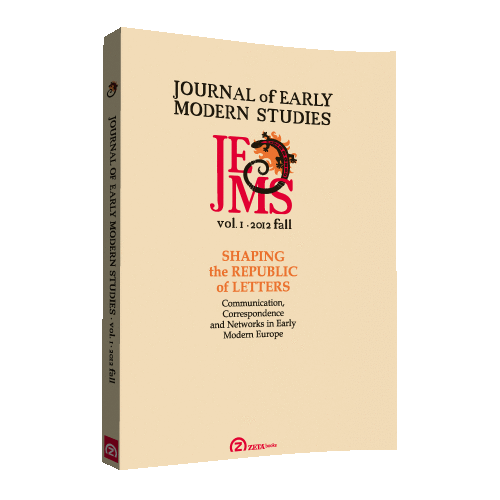
Keywords: Francis Bacon; experientia literata; mechanical arts; invention; craft guilds; Nicolas Houel; Jaques Gohory; Henri IV
This paper analyzes Francis Bacon’s observations on institutions for the advancement of knowledge and technical innovation. Early references to establishments for the promotion of knowledge can be found initial in Bacon’s early works, in the 1590s. Bacon’s journey to France in the second half of the 1570s played a role in shaping these early conceptions. In particular, Bacon was likely acquainted with Jaques Gohory’s Lycium philosophal and Nicholas Houel’s Maison de Charité Chrétienne. In the period following the composition of The Advancement of Learning (1605), Francis Bacon focused his attention on the foundation of a college for inventors. Practical plans for the establishment of a college were discussed in the Commentarius solutus (1608). Bacon’s proposals addressed his general concerns for the production of technological innovation in Stuart society; both the college of the Commentarius and the imaginary institution of Salomon’s House in the New Atlantis (1626) can be seen as inventor’s utopias, where innovators are freed from the pressures of the world of crafts. Analogous continental project likely inspired such institutions. Again, the case of France may be relevant; around the time of Bacon’s proposals for his college, Henri IV was actively fostering collaboration among skilled inventors under royal patronage, and outside the strict control of the guild system.
More...Keywords: feminist theories; soaps; soap operas; AIDS;
More...
Keywords: Civil society; sociopolitical polarization; sociopolitical conflicts; social movements; participative democracy; institutionalization of citizen’s participation; Venezuela
Civil Society and social movements have been heralded as vehicles for democratization in Latin America under the assumption that increased citizen participation in the political process could only strengthen democratic culture. After decades of social mobilization, participatory democracy was institutionalized in the Venezuelan Constitution of 1999 endowing Civil Society with unprecedented political powers and effectively legitimizing Civil Society’s incursion into the political. While this institutionalization may have fomented democratic practices;, it also unleashed a wave of violent confrontations between pro-Chávez and anti-Chávez forces weakening Venezuela’s democratic culture in their wake. We explore how the ethical principles attributed to Civil Society were undermined by conflicts fueled by polarization and increased citizen participation in the political process.
More...
Keywords: Intertext; Genre; Repetition, Hamlet; The Bible; Intractable Language
This paper first examines what kind of texts Conrad cites in his novels, and how they function and goes on to ask why Hamlet and the Bible are so significant in Lord Jim. We will argue that Hamlet and Lord Jim have something in them that will not be transformed into art and that accounts, in part, for Conrad’s saying that he has been “satanically ambitious” in writing this novel, which analyses the human condition, its hopes and shames, courage and cowardice, to a profound depth at the limit of language and artistic expression. The intertext, indirectly, enables Conrad to bestow a heightened rhetoric onto his protagonist, which he would otherwise have found impossible in the Modern period. Conrad frequently states his difficulty in finding language to express the reality of Jim; he also has recourse to different narrative genres – adventure, gothic, romance – to give consolation to those looking for narrative closure. The intertext of Hamlet and the Bible enable the reader to perceive beyond closure that there are areas of existence that cannot be expressed in words. However, whether we perceive the silence beyond the text as ineffable or unsayable must, finally, depend on the individual reader. Conrad loads Jim’s presence with Christian imagery in order to show that this very young, flawed, incoherent seaman is fated to atone for sin in self-sacrifice. Society hangs together in terms of inter-dependent community, but in another sense our common fate is to “hang together” for, in a post-lapserian world, we are all of us guilty and “under a cloud”.
More...Keywords: traditional peasant type village; survival strategies; end of peasantry; rural individualism; rural loneliness
In this paper I will try to reconstitute some aspects of the everyday reality in the collectivized village in the seventh and eighth decades of the last century. I will focus on Aluniş village from the Benesat commune, Sălaj County, a village situated on Someş Valley, on the railway connecting cities Jibou and Baia Mare. The reconstruction is based on the memories, written almost daily, of a villager, Paşca Alexa, who was a former political prisoner. Beyond the inevitable subjectivity of such notes, they point to the daily fight for survival of the villagers, the strategies used to meet the challenges of the communist regime, and also they capture the acuity end of the peasantry, against the background of major social processes of the communist period. Using a contextual-localist methodological perspective based on everyday life testimonies, I tried to show that the communist regime cannot be catalogued in a reductionist and abstract way. It is, like any social structure, a builder of historicity, even if it implied a great human drama. Within the proposed approach I have tried to restore fragments of everyday life during the communist regime. I followed both relations of population with the authority and interpersonal relationships within the rural communities, which constitute the subjects of the diaries.
More...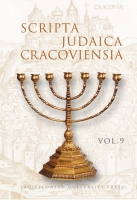
Keywords: Jews; History; Jewish quarter; Relations between Jews and Christians
The former Jewish quarter (16th to 20th century) of Nowy Wiśnicz (henceforth: Wiśnicz, Yid. ווישניצא Vischnitsa) has so far only been mentioned on a few occasions and with little precision, in the books by Stanisław Fischer (1927/28), Mieczysław Książek (1976, 1979, 1988, 1990), and Adam Bartosz (1992). The last decades saw a handful of publications regarding this subject. The first one to touch upon it was Iwona Zawidzka, who described the cemetery and gave a brief account of the town’s history. She was followed by Elżbieta Ostrowska, who focused on relations between Christian and Jewish inhabitants of the town from the 17th to the 19th centuries. Adam Bartosz, Stanisław Fischer, Mieczysław Książek and Iwona Zawidzka incorrectly ascribed the lack of any photographic record of both synagogues and the public buildings to having been demolished by Germans during the Nazi occupation. I. Zawidzka1 mentions an essay by Julia Goczałkowska2 in which the author describes what she refers to as the Wiśnicz “Jerusalem.”
More...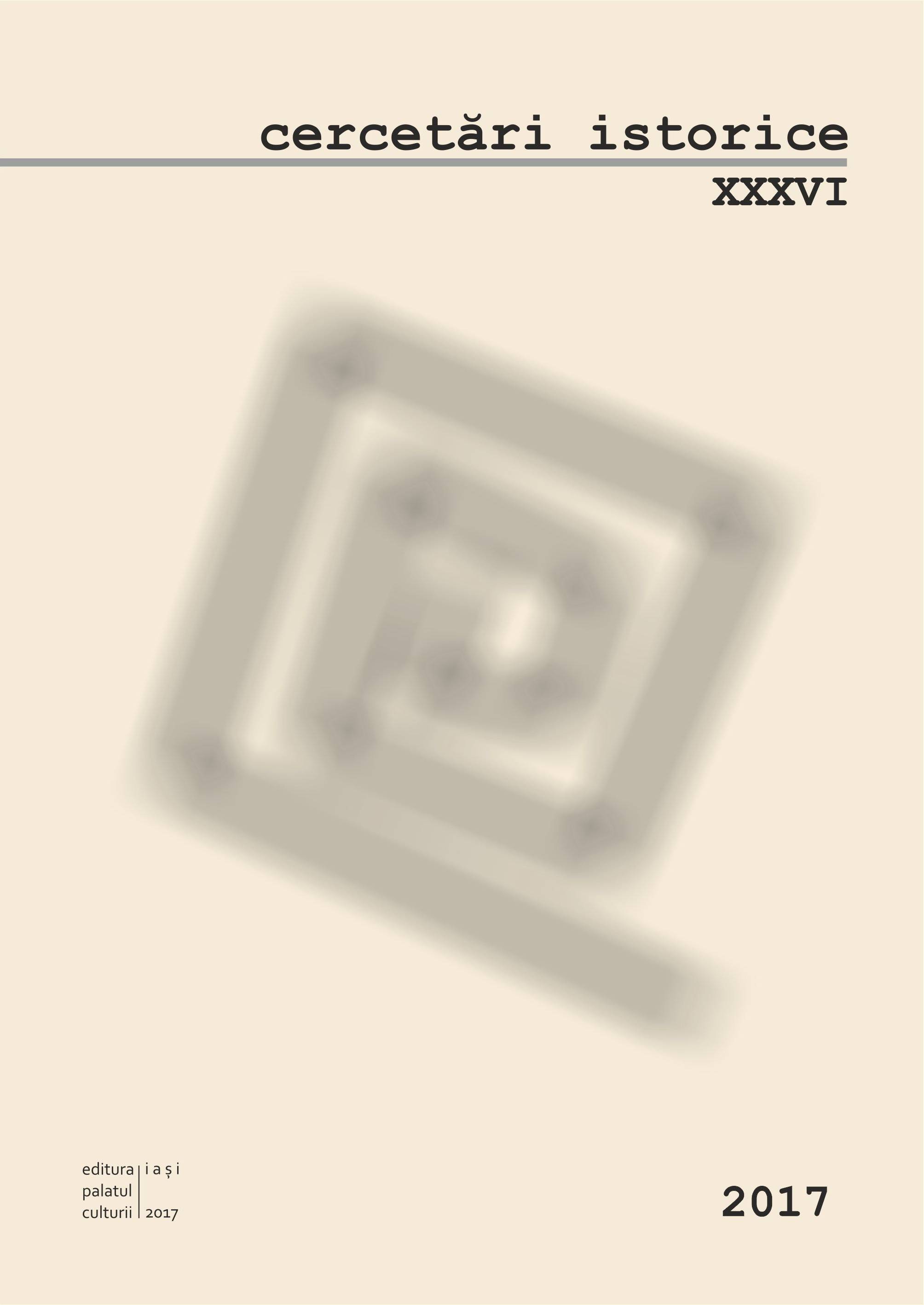
Keywords: Sword; saber; Byzantine swords; Islamic swords; scimitar; paramerion; drepanon; cultural image; religious warfare; persecution; Renaissance iconography; Moldavian painted churches
Evul Mediu este un timp al vizualului și, în Moldova, ca și în restul Europei de Est, pereții pictați ai bisericilor ilustrează curenții puternici ai credințelor lumești ale oamenilor. În ceea ce privește imaginile culturale, amprenta credinței contemporane asupra imaginii sacre este una dintre cele mai bune surse disponibile, deoarece modificarea minoră, personalizată, a scenei canonice dezvăluie modul în care persoana obișnuită (pictorul) a perceput un anumit comportament, obiect, persoană sau fenomen. Am constatat că este foarte convingător modul în care, pe pereții „ilustrați” ai bisericii din secolul al XVI-lea a mănăstirii Probota, călăii, persecutorii și, în general, personajele „rele”, sunt reprezentați purtând și fluturând săbii curbate „turcești”, în opoziție cu sfinții militari, arhanghelii și restul personajelor „bune”, care poartă spade drepte. Asociația dintre sabia curbă și „dușmanii lui Hristos” se dovedește a fi, după analiza noastră, un element străin tradiției bizantine, de vreme ce întregul fenomen și canoanele picturii sacre din regiunea noastră demonstrează această origine. De fapt, pictura Paleologă și cea anterioară prezintă o imagine mai realistă a omului de arme, adică personajele „rele” și „bune” poartă săbii curbate, în timp ce sabia dreaptă este, atât de rar pe cât apare, asociată cu „frâncii” (Occidentali catolici cu reputație rea în lumea bizantină). Faptul că majoritatea imaginilor medievale și renascentiste din Europa occidentală și centrală europeană dețin asociația sabie = rău este semnificativă pentru ponderea pe care stratul cultural european de secol o are în mentalul colectiv al Moldovei aceste perioade sau, cel puțin pentru pictorii bisericii Sf. Nicolae din mănăstirea Probota și cei ai altor câteva biserici pictate ale Moldovei.
More...
Keywords: the Slovak Republic; Counter-terrorism; Police Force; protection of people and property, internal security sys-tem; Takedown-Horizon 2020
This study has been dedicated to counter-terrorism forces which form part of the Police Force. Its officers deal with physical neutralisation of terror threats and they take part in fighting against organised crimes on the Slovak Republic territory. The material also addresses the issue of special use of firearms by operators and police sharpshooters who perform their daily duty in specialized counter-terrorism units. The study has been prepared within the framework of the realization of international scientific and research project implemented under the Horizon 2020-FCT-2015 operational programme, No: 700688, entitled: Understand the Dimensions of Organized Crime and Terrorist. Networks for Developing Effective and Efficient Security Solutions for First-Line-Practitioners and Professionals.
More...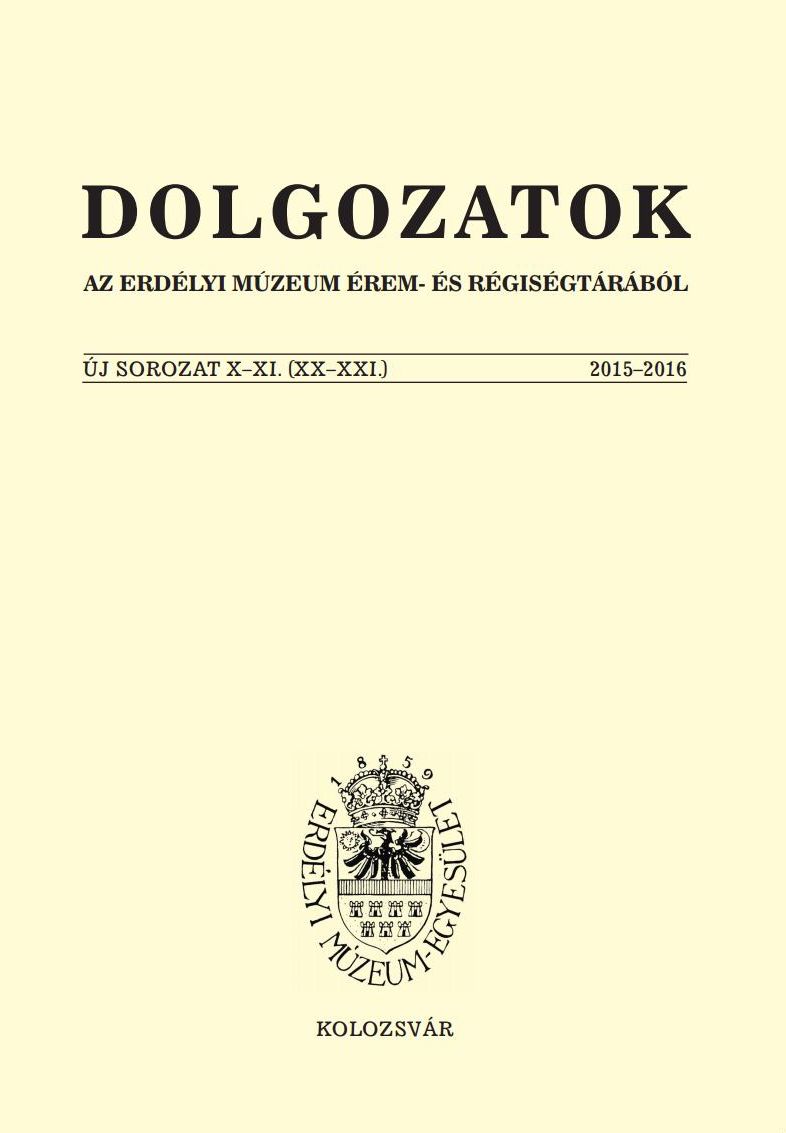
Keywords: historicism; Gothic revival; architectural competition; Vinga; Imre Steindl; Ottó Sztehlo; Ottó Tandor; Eduard Reiter
After the Austro-Hungarian Compromise the state establishment worked as a stable system until World War I. The immovable scheme of the Austro-Hungarian dual monarchy state-system and the economic prosperity induced building operations. The society became more and more civilian thus the architectural competitions, as a phenomena of the free-market economy, spread widely. This process was favoured by the Association of Hungarian Engineers and Architects. Among the architectural competitions the ecclesiastical ones frame a different group. In these cases, the constitutor is not a faceless state organization or a capitalist company but a community who considered its church as an expression of their identity. The city of Vinga which is located near to Arad advertised a competition for designing a new catholic church in 1886. Vinga was founded at the middle of the 18th century when Bulgarian refugees won the right to settle down in the uninhabited territories of Temes County. They preserved their Bulgarian identity thus they regarded themselves as a part of the Hungarian nation, too. Their biggest town Vinga was built with wide roads according to a planned urban structure and they raised a neoclassical Roman Catholic church. The economic prosperity and the growth of the population induced the need for a bigger and representative church at the end of the 19th century and they decided to organize an architectural competition to find the most magnificent plan. In the same time, they were quite tight-fisted, thus this two aspects resulted a knotty situation. The process of the design competition and its criticism was not only published in the local newspaper: the bilingual Vingánska Nárudna Nuvála / Vingai Néplap, but also in the most prominent Hungarian architectural journal: Építési Ipar. As it was ordered the plans were designed in Gothic style. In the Hungarian historicism the neo-Gothic influence came from Viena. The architects, as Imre Steindl, who studied from Friedrich von Schmidt brought this trend to Hungary, and later as teachers propagated this to their students. The Vinga Church Building Comitee found Ottó Szehlo’s – a Steindl-follower’s – neo-Gothic proposal the best but they wanted to reduce the costs. After some complication the construction plans were made by Eduard Reiter, an architect from Timișoara (Temesvár). Examining the original drawings we can follow the alterations, how the concept and the details changed. From the elegant competition design Reiter made a cheaper and a bit provincial church and in some forms it is possible to find his own taste. The Roman Catholic church in Vinga became a huge three-bayed building with a low-keyed crossnave, the white walls and rib vaults are emphasized with a decorative, ornamental painting. The furniture and the altars were made in the same style, giving us a magnificent general impression. The façade with two high towers determines the view of the city up to this day.
More...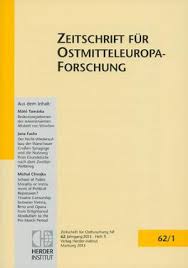
Keywords: interwar period; Czechoslovakia; Eastern periphery; Roma; internal colonialism; public health;
A post-Foucauldian view of public health as a tool of surveillance brings into analytical focus the nexus of ethnicity, disability, and gender as a main pathway for producing discursive practices justifying policies of inequality, exploitation, and segregation. Such a desirable deconstruction of this intersectionality relies heavily upon historicizing the practices of surveillance exposed by the most disfranchised groups, including the Roma. Over the past two centuries, presenting the Roma as a threat to people’s health has served diverse political aims across the countries. First introduced by Heinrich Moritz Gottlieb Grellmann, scapegoating “filthy” Roma parents, especially mothers, for their unhealthy approach to their children transformed over time into an intractable prejudice aimed at connecting the resonance effect of genetic predisposition to various diseases and the lack of a healthy mode of life amongst the majority of the Roma population across the world. Several cohorts of racially minded scholars propagated a wide range of stigmas concerning the vulnerability of the Roma, explained by the limited ability of the Roma to care for their own health and the health of their children. Obesity, dental problems, high-risk pregnancy, and other health issues have had a long-term impact on the objectification of the Roma and the legitimization of severe forms of surveillance over them. Inequality in health remains one of the most visible pieces of evidence for the ongoing racialization of Roma, even where there are attempts to provide access to welfare services and ensure better care.
More...